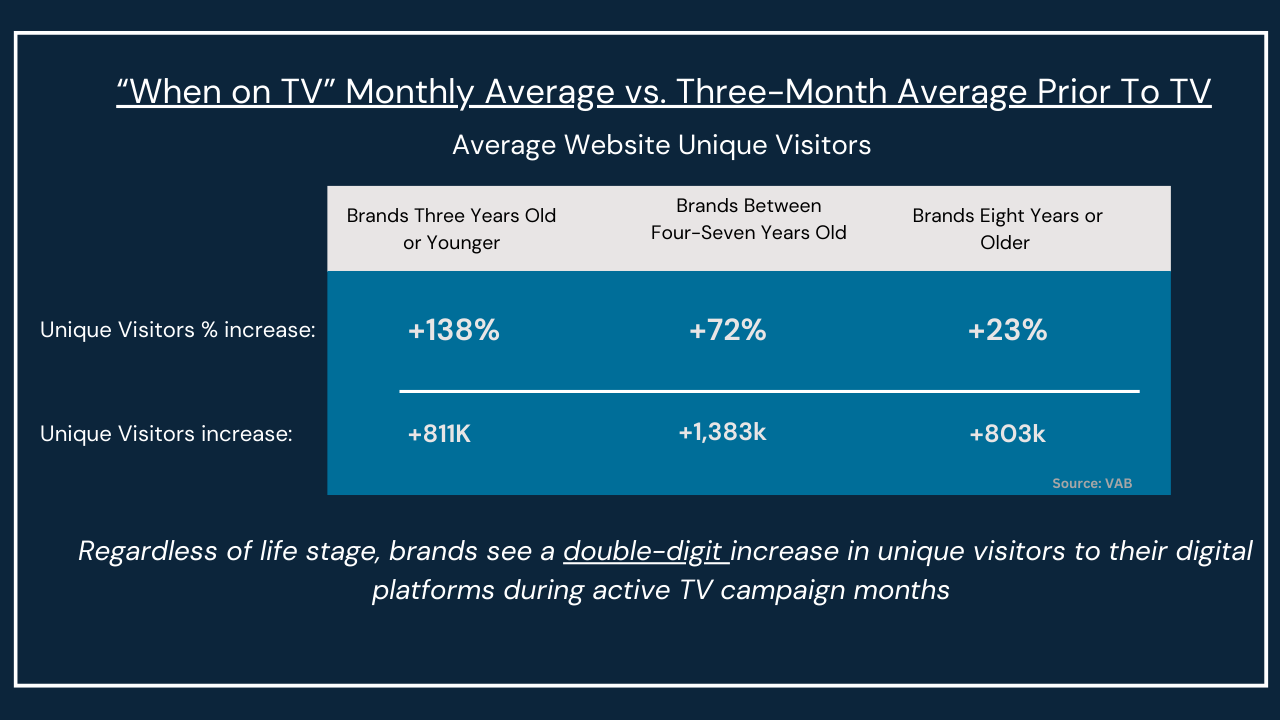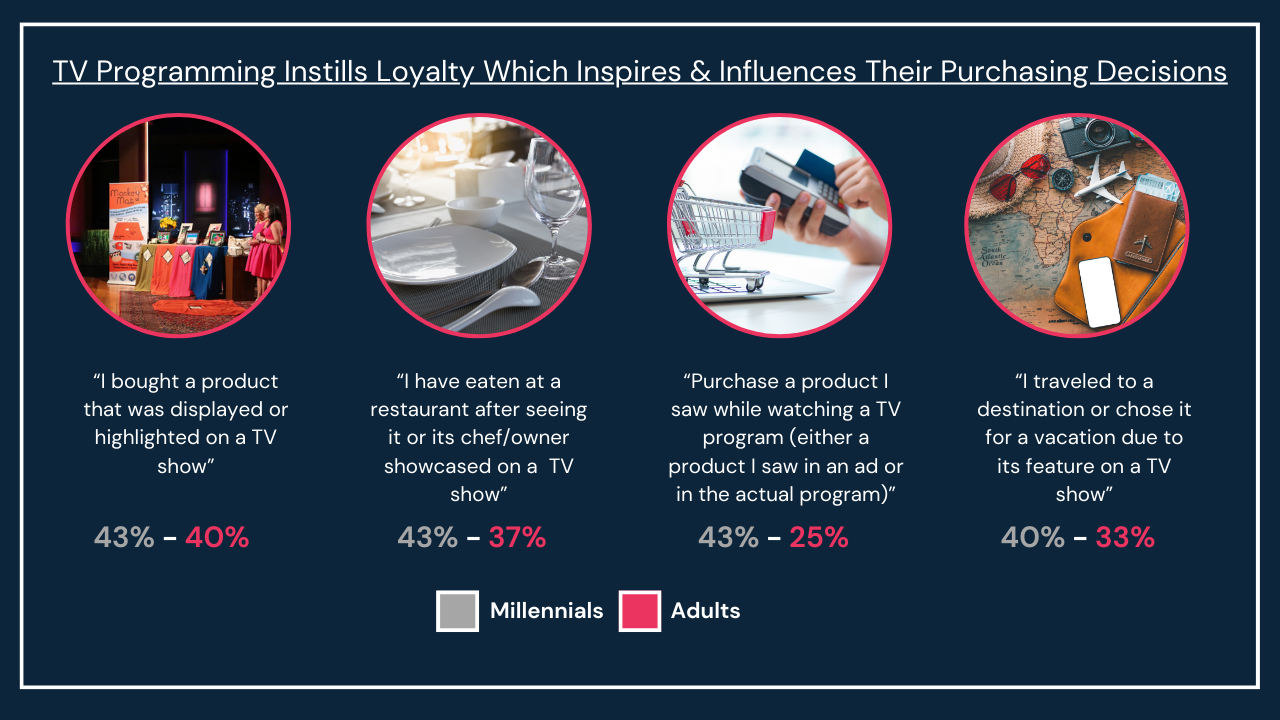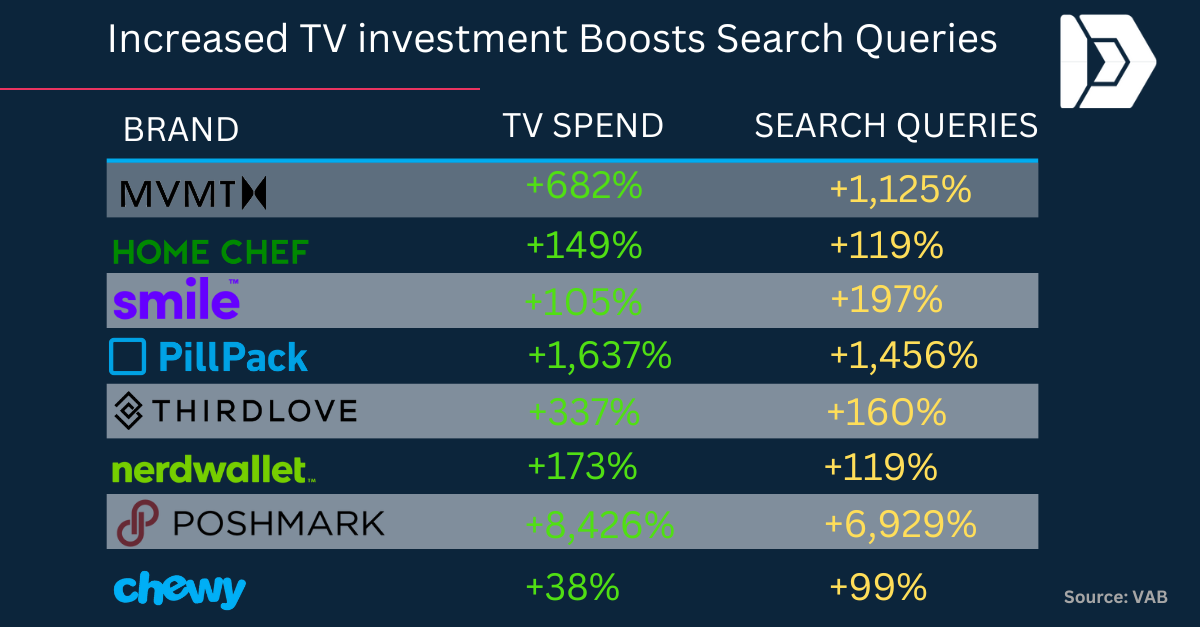The Power of TV Advertising in a Multi-Platform World

By: B.J. Stevenson & Andrew Orlando
In the
rapidly evolving landscape of media, the question often arises: Is TV
advertising still relevant? The answer is a resounding yes. Television remains
a cornerstone of effective marketing strategies for several compelling
reasons.
The concept of 'TV' has expanded beyond its conventional scope in today's diverse media environment. It's no longer confined to cable; television has evolved into an expansive, multi-platform giant that spans cable, Connected TV (CTV), and a broad array of streaming services accessed on a variety of devices. This transformation provides brands with extraordinary chances for growth and success.
As the Upfront season kicks off, with agencies and brands strategizing their 2024 investments, a co
nsistent trend emerges: Marketers are set to channel billions into TV advertising. This inclination is particularly strong in the early months, with January standing out as the optimal period for advertisers to capitalize on. This "golden window" offers unique opportunities for maximum impact and reach in the advertising realm.
Expansive Reach
Television's unparalleled reach is one of its most compelling advantages. It allows businesses to broadcast their message to millions of viewers simultaneously. This mass exposure can be particularly beneficial for launching new products or campaigns, as it quickly builds brand awareness across diverse demographics. Ad-supported TV's reach extends to 80% of households monthly, driving significant web traffic and elevating brand visibility, crucial for both emerging and established brands.

Targeted Advertising Opportunities
Progress in television technology and analytical capabilities has paved the way for advertising, that's more precise than ever. At Diray, our access to specific time slots, channels, and shows is informed by over 25 years of historical data, enabling us to pinpoint where your target audience is most engaged. This targeted strategy maximizes advertising spend efficiency by delivering your message to the most pertinent viewers. Moreover, while traditional linear TV excels at reaching a wide audience, Connected TV (CTV) offers a targeted strategy to reach specific segments. A balanced approach, utilizing both, is key—neither should be utilized exclusively, as a combined strategy offers the comprehensive reach and targeting that brands need.
Trust and Authority
Viewers consistently rate television among the most credible advertising mediums, influencing their buying choices significantly more than other digital forms. Eight out of ten individuals have expressed a higher level of trust in television as their go-to advertising medium for making informed purchase decisions. Thanks to its trustworthy and secure environment, coupled with its capability to propel results across various stages of the consumer journey, over half of advertisers currently regard linear TV as their most crucial video strategy. Advertising on TV helps brands establish a strong, lasting impression on consumers. The emotional ties viewers form with TV content enhance the impact of ads, boosting engagement, loyalty, and the likelihood of purchasing. This deep viewer engagement with TV shapes their purchasing behavior.

Storytelling at Scale & High Engagement
Television’s high-definition visuals and surround sound offer an immersive storytelling platform that captivates viewers, leading to increased ad engagement. Brands leverage TV’s wide-reaching screens to craft compelling narratives that resonate and build lasting connections. By integrating content across devices—from cable and CTV to mobile and tablets—brands offer a consistent story, enhancing their message and interaction points. Additionally, TV’s innovative ad formats, like interactive ads and shoppable features, enrich viewer experience and drive conversions across digital and retail domains.
Measurable Impact
Contrary to popular belief, TV advertising's impact is measurable. With tools like attribution modeling and market mix analysis, companies can track the direct effects of TV ads on sales and brand metrics. This data-driven approach allows businesses to refine their strategies for maximum ROI.
Long-Term Brand Building
While digital media is often focused on short-term conversions, TV excels in long-term brand building. The medium allows for storytelling that can evolve over time, laying the foundation for a strong brand identity that can influence consumer behavior over the long haul. Recently, more than 700 new brands invested upwards of $3.4 billion into national TV during their first year, forging unique brand personas and showcasing their worth to consumers. As these brands become household names, their revenue surges, reflecting the returns on their TV marketing expenditures.
Synergy with Digital Campaigns
Far from being rivals, TV and digital marketing are complementary. A smart marketing plan leverages the strengths of both. TV can be the catalyst that drives digital engagement. A memorable TV ad can lead to online searches, social media sharing, and digital purchases, creating a synergistic effect that amplifies the campaign’s overall impact. TV can serve as a catalyst, sparking conversations that are continued on digital platforms. This omnichannel strategy ensures a cohesive brand message across all touchpoints, fostering a holistic brand experience.
The January Effect:
January is often seen as a golden opportunity for advertisers due to a drop-in general advertising activity. With fewer general advertisers competing for airtime, there is an abundance of available advertising slots. This high supply relative to demand means advertisers can negotiate much more favorable rates, often securing media spots at substantial discounts that can exceed 50%, depending on the broadcaster.
The success of these negotiations is deeply rooted in the strength of the relationships that media buyers foster with network sales representatives. At Diray, the significance of these personal connections is evident; our established relationships with major entities in broadcast, cable, and streaming platforms allow us to consistently obtain discounted rates. This advantage is not limited to January but extends throughout the year, amplifying our leverage during this advantageous season.
For performance advertisers, this time of year is particularly advantageous. They often use it to debut new campaigns or to scale up investments in established ones, benefiting from the chance to amplify brand awareness or achieve a higher return on ad spending (ROAS). The savings gained during this period can then be strategically reinvested once the market stabilizes and the cost-efficiency of ad spending normalizes.
As we pivot toward Q1 of 2024, the dynamism of TV advertising is increasing. With its capacity to build massive reach, brand awareness, trust, authority, and drive conversions, television—in all its forms—stands as the most powerful and affordable way to capture eyeballs and hearts alike. For brands aiming to make a substantial impact, there is no better time to harness the airwaves than when the new year rolls in, bringing with it fresh opportunities and audience receptivity.
The lesson for brands is unequivocal: to stay ahead in a world where consumers are bombarded with content from every angle, leveraging the power of TV, especially in the opportune moments of early fiscal quarters, is not just advisable—it is essential.


